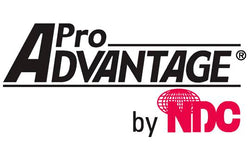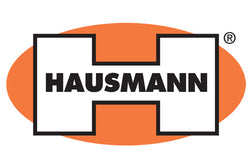Outfitting a Crash Cart
Contents
An emergency cart, or “crash cart” as it is more commonly known, serves as a focal supply center for the crash team. An undersupplied or substandard cart results in confusion among the responders, a frantic scramble for appropriate equipment, and often the death of or irreversible damage to the patient due to a delay in proper treatment. Whether your cart is situated in a busy hospital, quiet outpatient surgical center, hectic clinic, or generally predictable nursing facility, it must be stocked and ready for use at all times. Read on to find out what your crash cart must contain in order to perform its function: waiting to save lives.
Types of Crash Carts
A typical emergency cart is a rolling, multi-compartment unit, constructed of sturdy, durable material such as aluminum, steel, or a combination thereof, generally in a bright, easily visible color. The cart’s flat top often serves as a shelf for a defibrillator; some feature extra fixed or retractable shelves, custom holders or pre-drilled holes to secure IV bags and/or oxygen tanks, wrap-around bumpers to protect its contents and surroundings, and/or integrated push rails for smoother transportation. When choosing a cart, practitioners may consider color choices to match décor (or, conversely, to stand out conspicuously), premium wheels in high-traffic situations, customizable drawer dividers in more compact units, or full accessory packages for carts that are used more frequently, such as in intensive care or cardiac units. The carts are designed with user and patient safety in mind. One may opt for a seal or lock bar or system to protect its contents yet open easily when necessary or individually locking drawers for further security while accessing supplies.
Crash carts are available in various sizes and configurations to suit every facility’s individual needs: some carts are narrower or shorter for confined spaces while others are fashioned of non-magnetic or weakly magnetic materials for safe use in MRI suites. Cart storage configurations vary widely; carts may be equipped with three to nine drawers, often with interchangeable and customizable layouts, or a combination of drawers and cabinets. Some carts are fully equipped with a cardiac board and brackets, drawer dividers, and full emergency kits, while others consist of the cart with standard accessory kits, subject to the design preferences of its users. When a cart will be used primarily in pediatric settings, such as in a children’s hospital, a specialized pediatric model with standard pediatric color-coded drawer identifiers may be most suitable.
Stocking your Crash Cart
An emergency cart should be accessible and available at all times. It is equally crucial that the crash team is familiar with the location of all supplies within the cart. Drawers should be labeled or color-coded clearly and all supplies must be placed in its designated spot so that the team can find them when the need arises. In a standard seven-drawer crash cart, drawers are typically organized according to the (general) guidelines below.
The top of the crash cart is a common place for a defibrillator. Every facility must stock the correct defibrillator and appropriate accessories according to its capabilities: a clinic with less qualified responders need a defibrillator suited to basic life support (BLS) or advanced life support (ALS) abilities, an operating room will require a hospital-grade defibrillator with sterile and/or internal paddles, and a cardiac ICU may choose a defibrillator qualified for advanced cardiac life support (ACLS). If your cart includes storage baskets atop it, the baskets are a handy location for multi-function defibrillation pads and other supplies. The top of the cart will often feature an integrated IV pole and/or convenient oxygen tank holder (alternatively situated on the side of the cart). Frequently used supplies should be kept on top of the cart for easy access as well: a box of gloves, gauze pads, and similar non-hazardous items.
A cart’s top drawer is typically designated for medication storage. It is where the most commonly used medications in rescue situations should be located for easy access: alcohol pads, lidocaine, topical anesthetic, dopamine, sodium chloride, sodium bicarbonate, atropine, and epinephrine (for treatment of anaphylaxis).
The second drawer should contain adult intubation supplies: nasopharyngeal and oropharyngeal airways, laryngoscope handles and blades, Magil forceps, CO2 detector, appropriately sized blood pressure cuffs, endotracheal tubes, and intubation stylets.
The third drawer often holds pediatric intubation supplies: IV arm boards (to restrict movement) and securement system (a papoose or limb straps), butterflies, PIVs, protective dressing, spinal needle, suction catheter kit, endotracheal tubes, pediatric and infant blood pressure cuffs, oropharyngeal airways, laryngoscope blades and handles, Magil forceps, and batteries.
The fourth drawer may contain pediatric miscellaneous supplies such as EKG electrodes, infant feeding tubes, IV solutions, intraosseous infusion needles, Salem sump pump, umbilical vessel catheters, and medications (atropine, lidocaine, sodium bicarbonate) in child- sized doses.
The fifth drawer can hold IV and blood draw supplies in various sizes: IV catheters, syringes, specimen tubes, tape, tourniquets, 3-way stopcocks, and needleless shielded cannulas. Ensure that latex-free versions of all supplies are included for allergic patients and crash team members.
In the sixth drawer, store IV solutions and tubing: various sizes of syringes and needles, IV solutions, central venous catheter insertion kits, tubing, betadine solution and/or swabs, and tape. Again, supply latex-free supplies in this drawer.
The bottom drawer should contain procedure trays and other miscellaneous supplies such as gloves (including latex-free), surgical sutures, antimicrobial sponges, and cutdown trays in adult and pediatric sizes.
The above list is a general suggestion on crash cart organization. Obviously, every crash team must decide which configuration is right for them, taking individual situations into consideration. The most important concept is to keep supplies well-stocked and organized logically; for instance, to compress the above example into a six-drawer unit, one may combine the second and third drawers (all intubation supplies) and separate it with drawer organizers, placing adult supplies on one side and pediatrics on the other with clear marking. Alternatively, one may put all pediatric supplies (the third and fourth drawers) together, with pediatric medications in the top medication drawer.
Supplies that complement each other and are generally used together, such as laryngoscope blades, handles, forceps, and tubes, should be grouped together in a box or kit. The crash team may place frequently used supplies closer to the top of the cart for easier access and arrange the cart in a consistent, reasonable manner, and the cart's supplies must be checked, serviced, and replenished on a regular basis. After all, the purpose of a crash cart is to keep lifesaving supplies within easy reach; it is only rational to ensure that it is set up properly.
For assistance in choosing and outfitting a crash cart, check out TigerMedical.com for all of your emergency supplies. We take pride in helping selfless crash team members save the lives of patients nationwide!



























